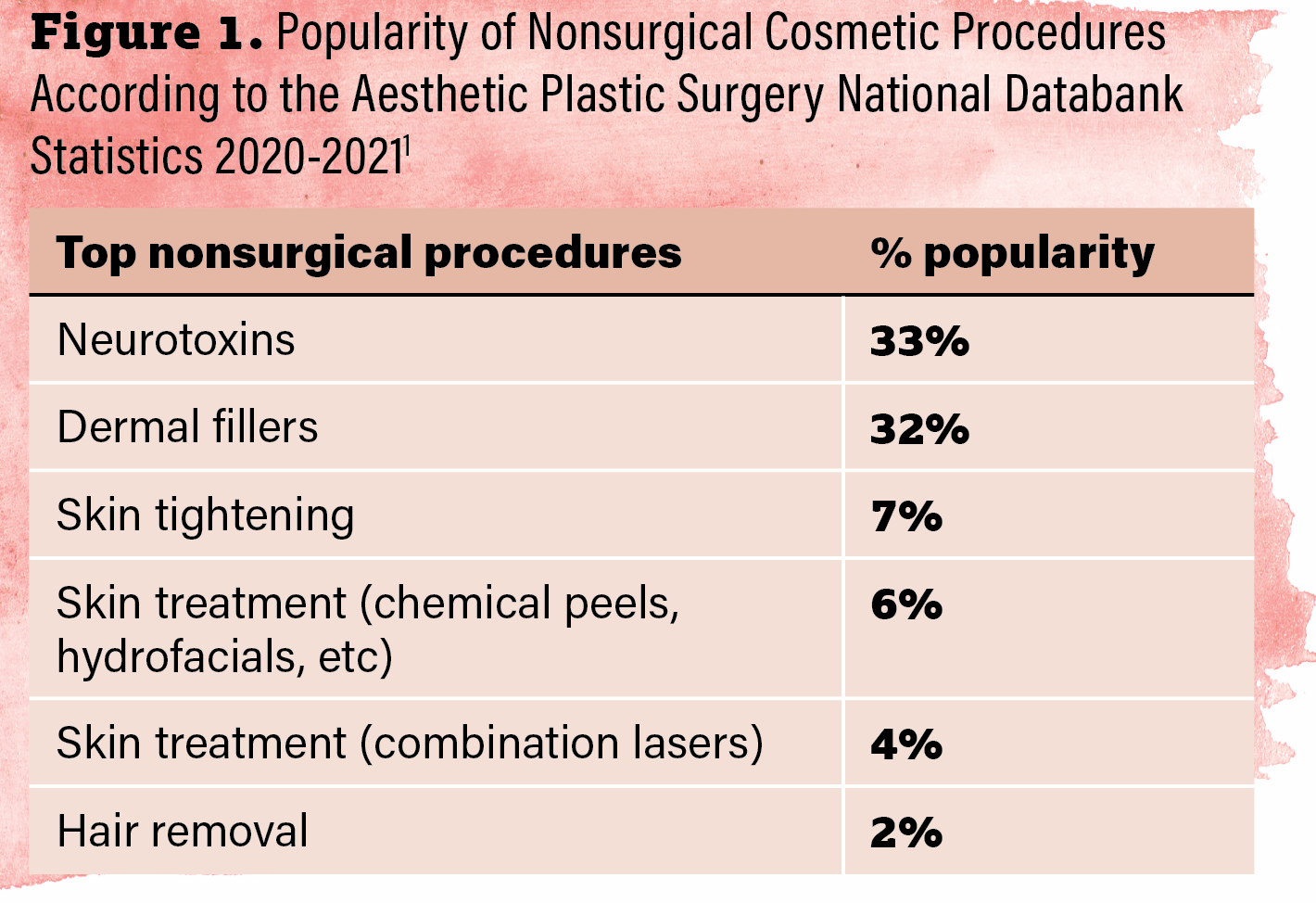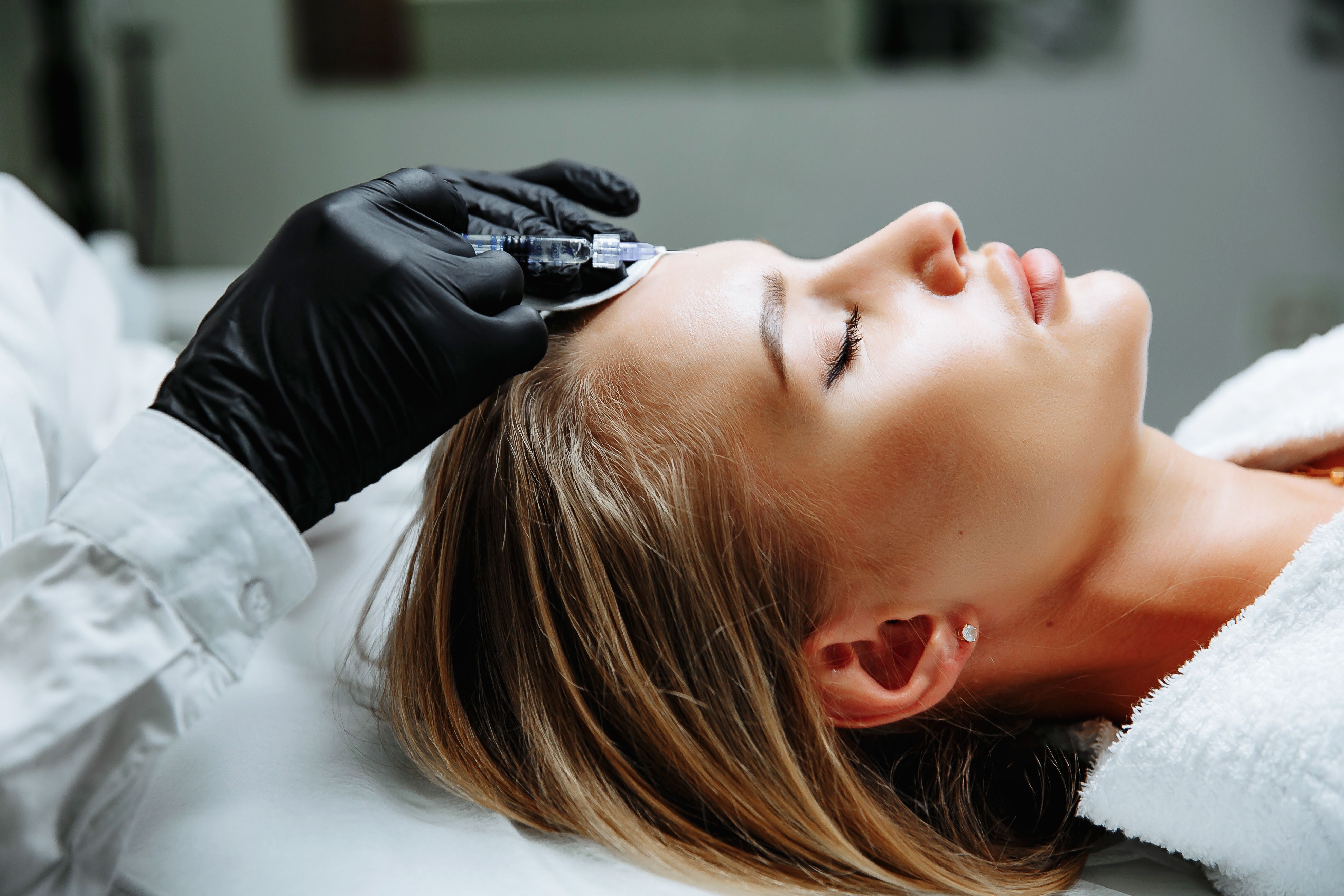- Case-Based Roundtable
- General Dermatology
- Eczema
- Chronic Hand Eczema
- Alopecia
- Aesthetics
- Vitiligo
- COVID-19
- Actinic Keratosis
- Precision Medicine and Biologics
- Rare Disease
- Wound Care
- Rosacea
- Psoriasis
- Psoriatic Arthritis
- Atopic Dermatitis
- Melasma
- NP and PA
- Skin Cancer
- Hidradenitis Suppurativa
- Drug Watch
- Pigmentary Disorders
- Acne
- Pediatric Dermatology
- Practice Management
- Prurigo Nodularis
- Buy-and-Bill
Publication
Article
Dermatology Times
Psychological Effects of Cosmetic Procedures Extend Far Beneath the Surface
Understanding the underlying motivation for seeking out minimally invasive cosmetic procedures is important to provide individualized and holistic care to patients.
It is vital for dermatologists to recognize that cosmetic procedures do not always evoke a positive response in patients, and the potential for negative psychological effects must not be overlooked. Cosmetic procedures are in high demand and their impact extends far beyond just superficial changes. These procedures can have considerable psychological ramifications, both positive and negative. From one stance, these procedures have the potential to enhance a patient’s features, making them feel more confident, and can positively impact their quality of life. The cosmetic industry in the United States is a multibillion-dollar enterprise with nonsurgical cosmetic procedures contributing to about $4.5 billion of the total revenue.1 Board-certified dermatologists perform many nonsurgical aesthetic treatments as outpatient procedures. These procedures have soared in popularity in the United States, with a staggering 44% increase observed from 2020 to 2021. The Aesthetic Society found that the top 2 nonsurgical procedures in 2021 were neurotoxins and dermal fillers, accounting for 33% and 32% of total revenue, respectively (Figure 1).1

Many seek out these minimally invasive cosmetic procedures to enhance their appearance and self-confidence, which translates to a better overall quality of life. In an interview study on patient-reported motives to undergo dermatologic cosmetic procedures, concerns about mental and emotional health were the most mentioned themes. Out of 30 patients, 27 reported that their physical appearance affected them emotionally, which manifested in feelings of depression, anxiety, anger, and sadness, and they looked to cosmetic procedures to improve their negative self-thoughts.2
Understanding Psychological Changes
Tracking the psychological effects of these procedures is not new to the aesthetic world as physicians strive to achieve their patients’ personal goals. One way to track the psychological effects of common cosmetic procedures is to assess patients’ subjective views after their procedures. The effects of botox are important to consider as one of the most common minimally invasive cosmetic procedures. One of the most common sites for neuromodulator treatment is the glabellar region. Various studies use FACE-Q, a patient-reported outcome to measure the observed psychological improvements in patients who undergo treatment of glabellar lines with neuromodulators. These studies have found that patients report significant improvements in their overall satisfaction with their facial appearance as well as their psychological well-being following the procedure.3-5
Understanding the psychological impacts of these procedures is important for physicians to consider. This awareness can help physicians to better understand and address their patients’ concerns and their motivation for undergoing such treatments. This will help guide the physician to better communicate with them and provide patient-centered care through shared decision-making. The FACE-Q scale allows physicians to track the subjective psychological impacts of aesthetic procedures. One study found that after 50 units of abobotulinumtoxinA (ASI, liquid formulation) for treatment of glabellar lines, patients consistently reported improvements in psychological well-being at all study visits, most significantly under the items “I feel [OK] about myself” and “I feel attractive.” The results showed a clear difference between the ASI 50-unit group and the placebo group at each study visit. There was also a significant treatment difference for the items “I feel great about myself” and feeling more attractive.3
Individuals have reported positive changes after aesthetic modifications that were tied to improvements in their physical and emotional well-being. Overall, cosmetic procedures can improve a person’s confidence and diminish feelings of depression or anxiety.6
Negative Psychological Effects
On the opposite end of the spectrum, there are potential negative effects of cosmetic procedures, particularly in patients with body dysmorphic disorder (BDD), which is an underdiagnosed psychological condition in which individuals perseverate on perceived flaws in their appearance and maladaptive repetitive behaviors that cause functional impairment in their daily lives.7 Although their perceived flaws are minimal or nonexistent to others, their appearance is a source of great frustration for these patients. They tend to seek out cosmetic procedures to fix their appearance rather than mental health support.8 Patients with BDD are often unsatisfied with the cosmetic outcome as their distorted view of their appearance persists after cosmetic procedures.9 This leaves patients feeling frustrated and disappointed with their physician and the outcome of the procedure.
Recently, there have been many ways individuals hyperfixate on their appearance with the emergence of filters on social media, Zoom, and being isolated during the pandemic in 2020.10 In 2021 when aesthetic procedures became more readily available again, nonsurgical procedures were up 44%. In a survey of more than 7000 participants, it was discovered that approximately 30% of respondents intended to invest in their appearance as a means of coping with the anxiety surrounding the return to in-person activities after the pandemic, with over 30% planning to take steps to change their appearance. The most reported dermatological concerns were skin discoloration (32.36%), wrinkles (24.45%), and acne (14.85%).10
Many hypothesize a connection between social media and the negative psychological effect on one’s appearance. Studies have indicated that individuals who spend more time on social media tend to experience higher levels of body dissatisfaction.11
The popularity of minimally invasive cosmetic procedures has surged since the 2000s,12 which may be attributed to the prevalence of social media and its influence on self-perception. Therefore, the demand for popular procedures such as neuromodulators continues to rise. It is important to note that although dermal fillers were the second most common minimally invasive procedure in 2021, dermal filler reversal rose by 57% in 2021 compared with the number of reversals in 2020.1 Although the reason for this increase in individuals who opted for dermal filler reversal is not clear, it can be presumed that individuals were dissatisfied with their results or because of complications of the procedure, leading them to pursue reversal. The reversal of cosmetic procedures has made waves in Hollywood recently. Some celebrities, including Blac Chyna, Courteney Cox, and Kylie Jenner, have made headlines popularizing dermal filler reversal as well. Their transparency with this decision possibly contributed to the acceptance and normalization of filler reversal among the general public in recent years. This trend highlights the growing acceptance that every cosmetic alteration is a personal choice and that shared decision-making between physician and patient is crucial for patient satisfaction. Physicians should be mindful when discussing the patient’s motivations and expectations for any cosmetic altering procedure to mitigate the risk of dissatisfaction. By having an open conversation and managing patient expectations, physicians should feel confident that their patient is both mentally and emotionally prepared for the process.
Moving Forward With Patient Expectations
Some individuals may not be ideal candidates for cosmetic procedures because of conditions such as BDD, other dysmorphia conditions, or unrealistic expectations. It is crucial for physicians to identify risk factors for these conditions before making any changes to their patients’ appearance.
Dermatologists strive not only to enhance their patients’ physical appearance, but also to improve patients’ self-esteem and quality of life. Thus, physicians must be able to identify potential indicators of BDD that could lead to adverse psychological consequences after cosmetic procedures. Understanding the underlying motivation for seeking out minimally invasive cosmetic procedures is important to provide individualized and holistic care to patients.
Nina Ventura is a doctor of osteopathic medicine candidate as well as a master of health services administration student at Lake Erie College of Osteopathic Medicine-Elmira in New York.
Elizabeth Arthur, MD, board-certified dermatologist, serves as the owner and medical director of Helendale Dermatology and Medical Spa, The Hair Center, and The Boutique at Helendale, in Rochester, NY.
Disclosures
Dr Arthur denies any affiliations with or involvement in any organization or entity with a direct financial interest in the subject matter or materials discussed in the manuscript, such as employment, research or project support, consultancies, stock ownership, honoraria, and expert testimony.
Nina Ventura has no relevant disclosures.
References
- National databank statistics: 2020-2021. Aesthetic Plastic Surgery. Accessed May 8, 2023. https://cdn.theaestheticsociety.org/media/statistics/2021-TheAestheticSocietyStatistics.pdf
- Waldman A, Maisel A, Weil A, et al. Patients believe that cosmetic procedures affect their quality of life: an interview study of patient-reported motivations. J Am Acad Dermatol. 2019;80(6):1671-1681. doi:10.1016/j.jaad.2019.01.059
- Ascher B, Rzany B, Kestemont P, et al. Significantly increased patient satisfaction following liquid formulation abobotulinumtoxinA treatment in glabellar lines: FACE-Qoutcomes from a phase 3 clinical trial. Aesthet Surg J. 2020;40(9):1000-1008. doi:10.1093/ASJ/SJZ248
- Dayan S, Joseph J, Moradi A, et al. Subject satisfaction and psychological well-being with escalating abobotulinumtoxinA injection dose for the treatment of moderate to severe glabellar lines. J Cosmet Dermatol. 2022;21(6):2407-2416. doi:10.1111/JOCD.14906
- Hilton S, Kestemont P, Sattler G, et al. Liquid abobotulinumtoxinA: pooled data from two double-blind, randomized, placebo-controlled phase III studies of glabellar line treatment. Dermatol Surg. 2022;48(11):1198-1202. doi:10.1097/DSS.0000000000003594
- Sadick NS. The impact of cosmetic interventions on quality of life. Dermatol Online J. 2008;14(8). doi:10.5070/d37s4656k6
- Krebs G, Fernandez de la Cruz L, Mataix-Cols D. Recent advances in understanding and managing body dysmorphic disorder. Evid Based Ment Health. 2017;20(3):71-75. doi:10.1136/EB-2017-102702
- Jassi A, Krebs G. Body dysmorphic disorder. Psychiatr Clin N Am. 2023;46(1):197-209.doi:10.1016/j.psc.2022.10.005
- Shivakumar S, Jafferany M, Sood S, Sushruth V. Cosmetic presentations and challenges of body dysmorphic disorder and its collaborative management. J Cutan Aesthet Surg. 2021;14(1):20-25. doi:10.4103/JCAS.JCAS_180_20
- Silence C, Rice SM, Pollock S, et al. Life after lockdown: zooming out on perceptions in the post-videoconferencing era. Int J Womens Dermatol. 2021;7(5Part B):774-779. doi:10.1016/J.IJWD.2021.08.009
- Shome D, Vadera S, Male SR, Kapoor R. Does taking selfies lead to increased desire to undergo cosmetic surgery. J Cosmet Dermatol. 2020;19(8):2025-2032. doi:10.1111/JOCD.13267
- Plastic Surgery Statistics Report: 2020. American Society of Plastic Surgeons. Accessed June 1, 2023. https://www.plasticsurgery.org/documents/News/Statistics/2020/plastic-surgery-statistics-full-report-2020.pdf







